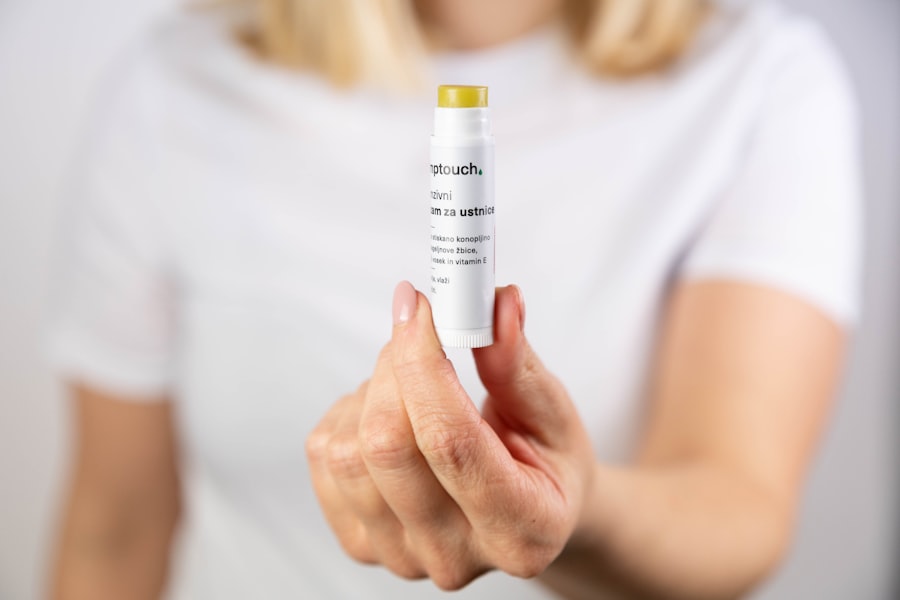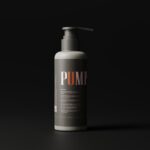Aftercare is a crucial aspect of any cosmetic or medical procedure, and understanding its significance can greatly enhance your overall experience and results. When you undergo a treatment, whether it’s a facial, laser therapy, or any other skin-related procedure, your skin is often left vulnerable and in need of special attention. Aftercare is not merely a suggestion; it is an essential part of the healing process that can determine the success of your treatment.
By prioritizing aftercare, you can minimize complications, reduce discomfort, and promote optimal healing. Moreover, aftercare plays a vital role in maintaining the results of your treatment.
By following aftercare guidelines, you ensure that your skin remains healthy and vibrant, allowing the benefits of your treatment to last longer. This commitment to aftercare reflects your investment in yourself and your well-being, reinforcing the idea that taking care of your skin is an ongoing journey rather than a one-time event.
Key Takeaways
- Aftercare is crucial for optimal results and to minimize potential side effects after a cosmetic procedure.
- Managing discomfort and irritation is important for a smooth recovery process.
- Protecting the skin from sun exposure is essential to prevent damage and maintain results.
- Proper hydration and moisturization are key for promoting healing and maintaining skin health.
- Avoiding certain activities and products, such as harsh exfoliants and alcohol-based products, can help prevent complications and irritation.
Managing Discomfort and Irritation
Experiencing discomfort or irritation after a procedure is not uncommon, but knowing how to manage these sensations can make a significant difference in your recovery. The first step in addressing discomfort is to listen to your body. If you feel pain or irritation, it’s essential to take it seriously and respond accordingly.
Over-the-counter pain relievers can be effective in alleviating mild discomfort, but always consult with your healthcare provider before taking any medication to ensure it’s appropriate for your situation. In addition to medication, applying cold compresses can provide immediate relief from swelling and irritation. Gently placing a clean, cool cloth on the affected area can soothe the skin and reduce inflammation.
Remember to avoid applying ice directly to the skin, as this can cause further irritation. Instead, opt for a soft cloth or gel pack wrapped in a towel. This simple yet effective method can help you feel more comfortable as your skin begins to heal.
Protecting the Skin from Sun Exposure

One of the most critical aspects of aftercare is protecting your skin from sun exposure. After undergoing a treatment, your skin may be more sensitive and susceptible to damage from UV rays. It’s essential to take proactive measures to shield your skin from the sun’s harmful effects.
Wearing broad-spectrum sunscreen with an SPF of at least 30 is non-negotiable. Apply it generously to all exposed areas of your skin, even on cloudy days or when you’re indoors near windows. In addition to sunscreen, consider wearing protective clothing such as wide-brimmed hats and long sleeves when spending time outdoors.
This added layer of protection can significantly reduce the risk of sunburn and hyperpigmentation, which can occur more easily on healing skin. If you plan to be outside for extended periods, seek shade whenever possible and reapply sunscreen every two hours or immediately after swimming or sweating. By taking these precautions, you can help ensure that your skin heals properly and maintains its newfound radiance.
Proper Hydration and Moisturization
| Metrics | Proper Hydration | Moisturization |
|---|---|---|
| Skin Health | Improves skin elasticity and texture | Prevents dryness and flakiness |
| Water Intake | Drink at least 8 glasses of water per day | Use hydrating moisturizers daily |
| Benefits | Regulates body temperature and flushes out toxins | Locks in moisture and prevents water loss |
Keeping your skin hydrated and moisturized is another essential component of aftercare that should not be overlooked. Hydration helps support the healing process by promoting cell turnover and maintaining skin elasticity. Drinking plenty of water throughout the day is vital for overall health and can significantly impact how your skin looks and feels post-treatment.
Aim for at least eight glasses of water daily, adjusting based on your activity level and climate. In addition to internal hydration, external moisturization is equally important. Using a gentle, fragrance-free moisturizer can help lock in moisture and create a protective barrier on your skin.
Look for products containing ingredients like hyaluronic acid or glycerin, which are known for their hydrating properties. Apply moisturizer regularly, especially after cleansing or exposure to harsh environmental factors. This consistent care will help keep your skin supple and comfortable as it heals.
Avoiding Certain Activities and Products
After undergoing a cosmetic or medical procedure, it’s crucial to avoid specific activities and products that could hinder your recovery. Engaging in strenuous exercise or activities that cause excessive sweating can lead to irritation and increase the risk of complications. It’s advisable to refrain from intense workouts for at least a week following your treatment or until your healthcare provider gives you the green light.
Additionally, be cautious about the skincare products you use during this time. Harsh exfoliants, retinoids, or products containing alcohol can irritate sensitive skin and disrupt the healing process. Instead, opt for gentle cleansers and soothing serums that are specifically formulated for post-procedure care.
Always read labels carefully and consult with your provider if you’re unsure about which products are safe to use during your recovery period.
Monitoring and Treating Potential Side Effects

Being vigilant about monitoring your skin for potential side effects is an essential part of aftercare that should not be underestimated. While many individuals experience minimal side effects following a procedure, some may encounter redness, swelling, or even allergic reactions. It’s important to keep an eye on any changes in your skin’s condition and report them to your healthcare provider if they persist or worsen.
If you do experience side effects such as redness or swelling, there are several ways to manage these symptoms effectively. Applying cool compresses can help reduce inflammation, while over-the-counter antihistamines may alleviate allergic reactions. However, always consult with a professional before taking any medication or applying topical treatments to ensure they are appropriate for your specific situation.
By staying proactive about monitoring and treating side effects, you can help facilitate a smoother recovery process.
Following Up with Additional Treatments
Aftercare doesn’t end once you leave the clinic; it often includes follow-up appointments for additional treatments or assessments. These follow-ups are crucial for ensuring that you achieve the best possible results from your initial procedure. During these visits, your healthcare provider will evaluate your progress and may recommend additional treatments or adjustments based on how well your skin is responding.
It’s essential to attend these follow-up appointments as scheduled and communicate openly with your provider about any concerns or questions you may have. They can provide valuable insights into what to expect during the healing process and offer personalized recommendations tailored to your unique needs. By staying engaged in your aftercare plan and following up with additional treatments as necessary, you can maximize the benefits of your initial procedure.
Consulting with a Professional for Personalized Advice
Finally, one of the most effective ways to ensure successful aftercare is by consulting with a professional who can provide personalized advice tailored to your specific situation. Every individual’s skin is unique, and what works for one person may not be suitable for another. A qualified dermatologist or skincare specialist can assess your skin type, treatment history, and any underlying conditions to create a customized aftercare plan that addresses your needs.
Don’t hesitate to reach out with questions or concerns during your recovery process. Professionals are there to guide you through every step of the journey and can offer insights that may not be readily available through general resources. By seeking personalized advice, you empower yourself with knowledge that can enhance your aftercare experience and ultimately lead to better results from your treatment.
In conclusion, understanding the importance of aftercare is vital for anyone undergoing cosmetic or medical procedures.
Your commitment to aftercare reflects not only an investment in your appearance but also in your overall health and well-being.
After undergoing laser hair removal treatment, it is crucial to follow proper aftercare tips to ensure optimal results. One helpful article that provides detailed information on post-treatment care is this article from In Laser Hair Removal. This article offers valuable insights on how to care for your skin after laser hair removal, including tips on moisturizing, avoiding sun exposure, and managing any potential side effects. By following these aftercare tips, you can help maintain the effectiveness of your laser hair removal treatment and achieve smooth, hair-free skin.
FAQs
What is laser hair removal aftercare?
Laser hair removal aftercare refers to the steps and precautions that should be taken after undergoing a laser hair removal treatment. These aftercare tips are important for ensuring the best results and minimizing any potential side effects.
Why is laser hair removal aftercare important?
Laser hair removal aftercare is important because it helps to promote healing, reduce the risk of complications, and maximize the effectiveness of the treatment. Proper aftercare can also help to minimize any discomfort or irritation following the procedure.
What are some common laser hair removal aftercare tips?
Common laser hair removal aftercare tips include avoiding sun exposure, using gentle skincare products, avoiding hot showers and baths, avoiding excessive sweating, and keeping the treated area clean and moisturized. It is also important to follow any specific instructions provided by the laser hair removal technician.
How long do I need to follow laser hair removal aftercare tips?
The duration of laser hair removal aftercare tips can vary depending on the individual and the specific treatment. In general, it is recommended to follow these aftercare tips for at least a few days to a week following the treatment. It is important to follow the specific instructions provided by the technician.
What are the potential side effects of not following laser hair removal aftercare tips?
Not following laser hair removal aftercare tips can potentially lead to side effects such as skin irritation, redness, swelling, and even hyperpigmentation or scarring. It is important to follow the aftercare tips to minimize these risks and promote proper healing.




